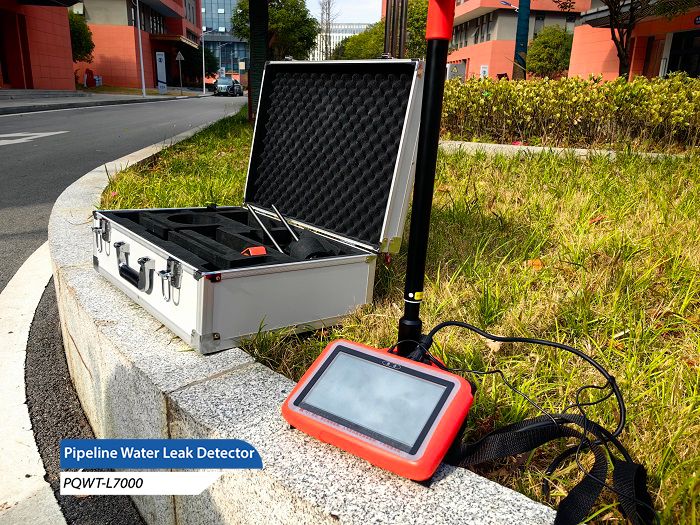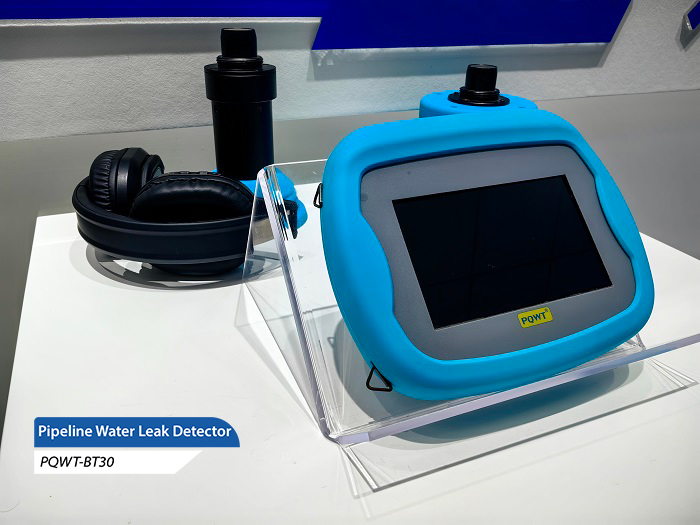In modern cities, pipeline systems are vital infrastructure for keeping life and industry running properly. However, over time, pipelines can develop leaks for a variety of reasons. In order to ensure safe and economical operation, effective detection means are necessary to detect and deal with these leaks. This article will introduce several commonly used detection means and how they corroborate each other to achieve more accurate and reliable pipeline leakage detection.

1, audio-audible detection method pipeline leak detector
The audio-audible detection method is a detection method based on sound propagation. When there is a leak in the pipeline, the water flow will produce a specific sound. Through professional acoustic pickup equipment, these sounds can be captured and the location of the leak can be determined. This method is simple, quick and suitable for most pipe types. However, it is also subject to interference from ambient noise and other factors that may lead to misjudgment.
2、Correlation analysis leak detection method pipe leak detector
Correlation analysis leak detection method is a detection method based on mathematical and physical principles. By analyzing the propagation speed and time of the sound wave generated at the leakage point in the pipeline, the location of the leakage point can be accurately determined. This method has high precision and strong anti-interference ability, and is especially suitable for pipeline detection over long distances and large pipe diameters. However, it requires specialized equipment and data analysis skills.
3、CCTV endoscopic detection pipeline leak detector
CCTV endoscopic detection is an intuitive detection method. By placing a high-definition camera into the pipeline, the internal condition of the pipeline can be observed in real time to detect leaks, blockages and other problems. This method not only detects leaks, but also provides information about the internal structure and condition of the pipe. However, it requires specialized pipeline leak detectors and operating skills, and is not applicable to all types of pipelines.
4、Real-time in-pressure leak detection pipeline leak detector
Real-time on-pressure leak detection is a pressure sensor-based detection method. By installing high-precision pressure sensors on the pipeline, the pressure changes in the pipeline can be monitored in real time, and leaks can be detected and alarmed in time. This method is applicable to all types of pipelines, especially high-pressure and hazardous pipelines. However, it requires specialized equipment and maintenance.
5、Tracer gas detection method pipeline leak detector

Tracer gas detection method is a detection method based on the principle of gas diffusion. By injecting a specific tracer gas into the pipeline and then monitoring the change of gas concentration outside the pipeline, leakage can be detected and the location of the leakage point can be determined. This method is suitable for pipelines with high sealing requirements, such as the chemical and pharmaceutical industries. However, it requires specialized equipment and operating skills, and may have a certain impact on the environment.
6、Far infrared thermal imaging detection
Far infrared thermography is a detection method based on infrared radiation. Through the far-infrared camera can monitor the temperature distribution of the pipeline surface, to find abnormal temperature differences and leakage points. This method is suitable for high temperature and high pressure pipelines, such as steam and hot water pipelines. However, it requires specialized equipment and operating skills, and is not applicable to piping at low temperatures or without a heat source.
In summary, each detection method has its unique advantages and scope of application. In practical application, in order to improve the accuracy and reliability of detection, a combination of multiple means can be used for detection. For example, the audio-audible detection method can quickly locate the leakage point, the CCTV endoscopic detection can provide detailed internal information, the correlation analysis leakage detection method and real-time in-pressure leakage detection can accurately determine the location of the leakage point, and the tracer gas detection method and the far-infrared thermal imaging detection can be applied to pipelines with special requirements. Through a variety of means to corroborate each other, can be more comprehensive understanding of the condition of the pipeline and leakage, for subsequent repair and maintenance to provide strong support.








